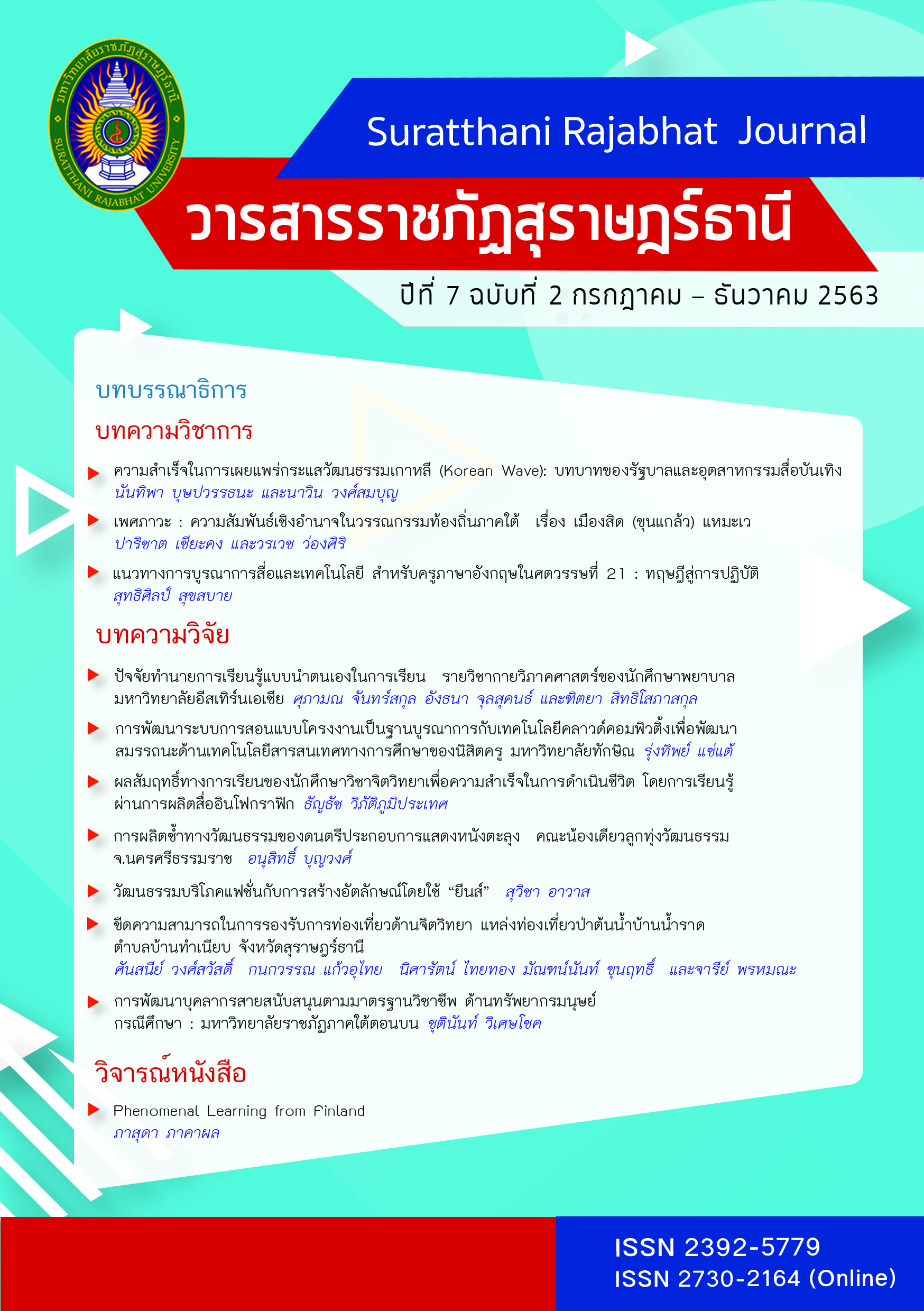Culture of Fashion Consumption and Identity Creation with “Jeans”
Main Article Content
Abstract
The consumerism culture of the symbolic world has influenced relationships in various directions such as social structure and relationship of residents. Jeans are literally goods and represent the structure of identity which is widely interesting. Not only is the context of jeans gradually developed, but also the change in each region to the new circumstance occurs.
When jeans are transferred to various contexts, its journey originates from a normal product with a cheap price that workers normally wear until jeans are torn from usage to be second hand materials or even trash. However, when time passes with the evolution of advertisements and the building of illusive perception by transferring to different regions, jeans are displayed as the symbol of cultural heritage and the yearning of nostalgic moments. With the effort of advertisements and illusive perception in the consumerism trend as well as mass culture, jeans are becoming more valuable. Firstly, they are considered as a human masterpiece reflecting thoughts, designs, and ancient times. Secondly, jeans are associated with cultural evidence, documents, and history that demonstrate ancestors’ way of life. Both considerations lead jeans to be placed and valued in the museum. Through time and space, the transference of jeans is essential. The interpretation of jeans triggers new inspirations to create art pieces with aesthetic value, and it contributes to the newly integrated art.
Article Details
References
กำจร สุนพงษ์ศรี. (2558). ศิลปะสมัยใหม่. จุฬาลงกรณ์มหาวิทยาลัย.
ชลูด นิ่มเสมอ. (2542). องค์ประกอบศิลปะ. ไทยวัฒนพานิช.
ณัฏฐชัย วิรุฬห์วชิระ (2554). ตำนานยีนส์ : Legend of Jeans. ปราชญ์.
ธีรยุทธ บุญมี. (2551). การปฏิวัติสัญศาสตร์ของโซซูร์ : เส้นทางสู่โพสต์โมเดอร์นิสม์. วิภาษา.
อภิญญา เฟื่องฟูสกุล. (2543,มีนาคม). “แนวความคิดหลักทางสังคมวิทยาเรื่อง
อัตลักษณ์”. เอกสารประกอบการประชุมทางวิชาการระดับชาติสาขาสังคมวิทยา ครั้งที่ 1 ( น. 81-193).
อัศนีย์ ชูอรุณ และ เฉลิมศรี ชูอรุณ. (2528). แบบอย่างศิลปะตะวันตก. (ม.ป.ท.)
อารี สุทธิพันธุ์. (2516). ศิลปนิยม. เพชรเกษม.
พลังความคิดทัศนศิลป์และศิลปศึกษา. (2557). พลังความคิดทัศนศิลป์และศิลปศึกษา.
เพชรเกษม.
อิทธิพล ตั้งโฉลก. (2546). ARTRECORD. อมรินทร์.
แนวทางการสอนและสร้างสรรค์จิตรกรรมขั้นสูง. (2550). แนวทางการสอนและสร้างสรรค์จิตรกรรมขั้นสูง. อมรินทร์.
Baudrillard, J. (1999). The Consumer Society : Myth & Structures. SAGE.
Bennett, A. (2005). Culture and Everyday Life. SAGE.
Craig, J. (1994). The Face of Fashion: Cultural Studies in Fashion. Routledge.
Featherstone, M. (1992). Consumer Culture & Postmodernism. SAGE.
McCracken, G. (1988). Cultural & Consumption. lndiana University Press.


